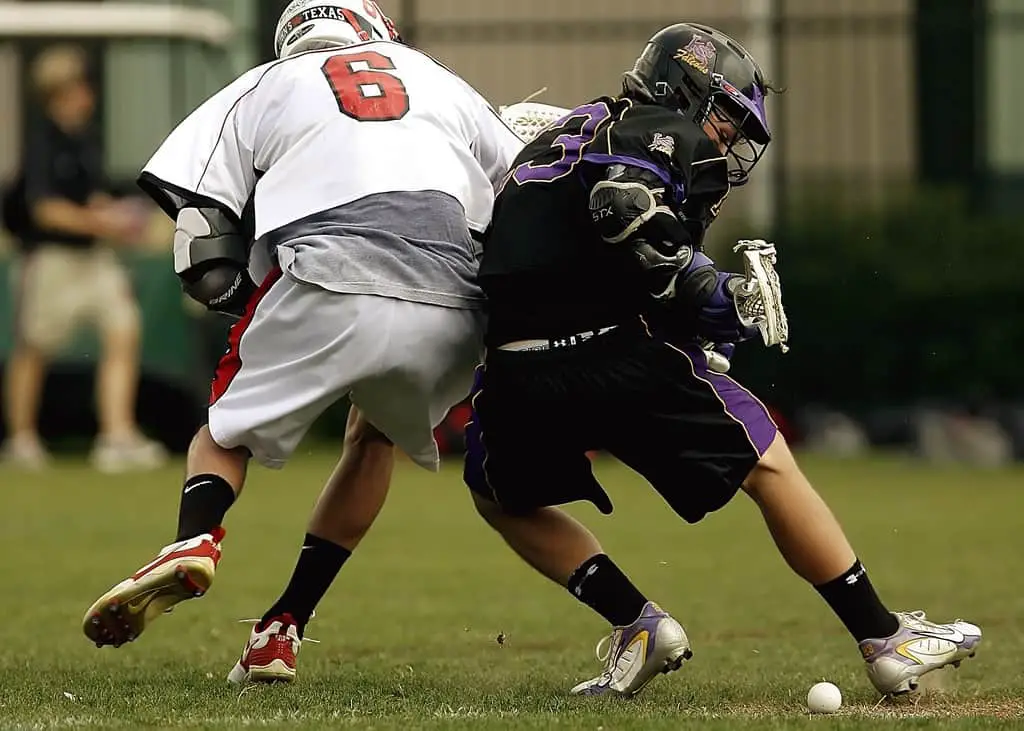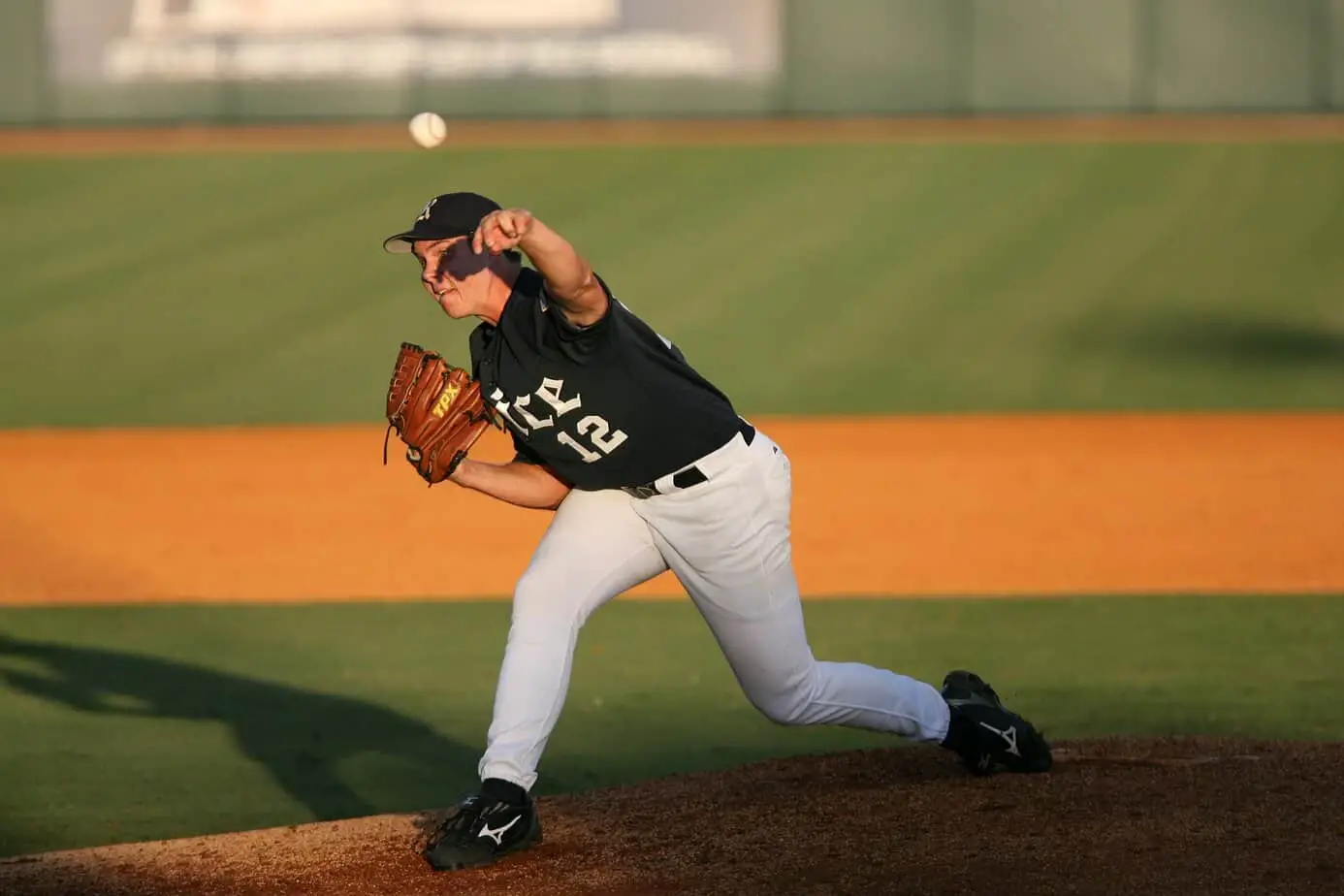It is clear that the lacrosse field can get a little feisty on occasion. Players need to get the ball, after all. However, a big question is; can you tackle in lacrosse? After all, you never really see that much full-on tackling in the game. The answer; no, You can’t. You can do something known as body checking, but proper tackles are against the rules of the sport. Let me explain.
Body Checking Vs. a Tackle in Lacrosse
Sadly, not a lot of people know the difference between a body check and a tackle. However, I can’t really say that this surprises me. If you watch many sports, you will notice that they refer to a body check as a tackle. This means that the terminology has become a little intermingled. However, it is important to know what a body check is to understand the rules of lacrosse.
Perhaps the best way to think of it is that a body check is a nudge to try to gain control of the ball. A tackle is something much more forcible. A tackle is much more aggressive than just trying to win possession of the ball. It is the intent to hamper the opposing player in a violent manner. Obviously, there doesn’t have to be violent intentions, but it can often seem like it.

The main aim of a body check is to really hamper the opposing player’s ability to handle the ball. A tackle’s intention is to completely force the player off of the ball, while also taking them out of the game for a short time (even if it is a second or two).
I am not saying that body checks are always going to be slight nudges. There will be some pretty hefty body checks. However, the definition of a body check is clearly laid out in the lacrosse rules, and I am going to discuss that in the next section. Anything that goes against these rules will be defined as a tackle under the rulebook. Tackles carry penalties in lacrosse.
Can You Tackle in Lacrosse?
No, You can only do body checking. What is classed as a body check is clearly laid out in the rules? Any other type of defensive contact could be regarded as a tackle unless it is a stick check, which I am going to talk about in the next section. The rules are a bit tighter for those.
Any form of defensive contact in lacrosse should meet the following criteria:
- Any contact must be above the belt.
- This contact must also be below the head.
- You cannot approach from behind. The contact should only be from the front or the side.
- If the player is on the ground, you cannot come into contact with them.
- At all times, the defensive player should keep both hands on the crosse. This means that hands cannot flail about wildly. It is only the body coming into contact, not the arms.
- You can only touch a player if they either have possession of the ball or they are very close to a ball that is not in possession of anybody.
- The run to the body check should not be greater than five-yards.
Honestly, while these lacrosse rules for body checks may seem a little intense, they aren’t. Once you start playing the sport, you will quickly work out the difference between a body check and a tackle. As long as you are only nudging the opposing player, and your hands never leave the crosse, nine times out of ten, it will be classed as a body check and within the rules.
The one thing that is not covered in the rules will be how intense that body check can be. To be honest, body checking can be quite intense. It isn’t uncommon to see players fall over from the force of the body check. This is probably why most people believe that tackling is allowed in lacrosse. It can get pretty intense at times.
It is fine for players to fall over due to the force of the body check. As long as the rest of the contract conforms to the rules before, this is completely allowed. The referee will not call a foul.
Can You Stick Check in Lacrosse?
Yes, You can Although, once again, there needs to be a few rules.
For starters, the player carrying out the stick check should ensure that the crosse is below their shoulders at all times. If they raise the crosse above their shoulders, then it is an illegal stick check. This is because it is likely that the stick check at this height is hitting something that shouldn’t really be hit.
During a stick check, the stick can only come into contact in the area below the shoulder and above the belt. A stick check outside of these areas will be regarded as a foul.
The stick check must also have a purpose. This means that a player shouldn’t be using the stick with wild abandon. The stick is not a weapon. It is a tool to try and prevent the opposing player from being able to control the ball. So, while there will likely be a small amount of hitting involved with the stick, it shouldn’t be a crazy amount.
The rules are pretty open, one that is regarded as ‘too much’ here. It is pretty much up to the referee. So, if you are playing lacrosse, keep an eye on the referee’s decision making. This will give you an idea as to how far you can go with a stick check.
There are no rules that state that both hands should remain on the stick. Although, it is unlikely that a stick check with one hand will have much of an impact on the opposing player.
What Are The Penalties for Tackling in Lacrosse?
The penalty for a tackle in lacrosse will be dependent on the severity of the tackle, as well as the referee.
In the case of a severe tackle where it is evident that there was intent to harm the other player, or the tackle was so reckless that it could have resulted in severe injury, the referee may eject the tackling player from the game. This will be a permanent ejection, and they will not be allowed to return to the field, which is rarely happening.
In most cases, a tackle will be met with a non-releasable personal penalty. This means that the tackling player will need to spend time out of the game. This will be for a few minutes. Remember, this is a non-releasable penalty. This means that the player will not be released from the penalty zone in the event of a goal. They have to sit the whole time out of the game.
If a tackling player continues to receive personal penalties (normally around five-times), then the referee will exclude them from the game permanently.
Conclusion
You cannot tackle in lacrosse. You can only use body checks in an attempt to gain posession of the ball. Any form of tackling in the game will be met with severe penalties.



